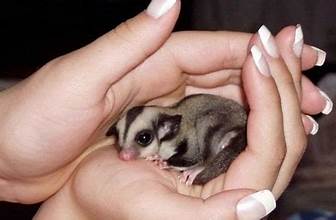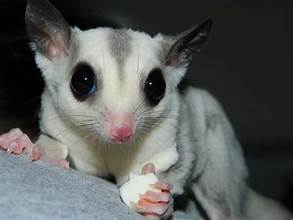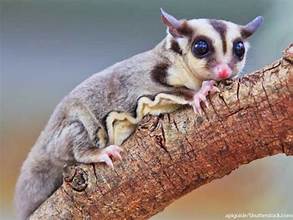When approached with patience and understanding, sugar gliders are adorable social marsupials that form strong bonds with their human caregivers. However, building that trust takes time, consistency, and the proper techniques. If you’re ready to create a meaningful bond with your sugar glider, this guide will walk you through the process, emphasizing bonding pouches, interactive strategies, and tips for success.
Understanding Sugar Gliders’ Nature
Before jumping into bonding techniques, it’s crucial to understand sugar gliders’ instincts and social behaviors:
- Nocturnal Lifestyle:
Sugar gliders are most active at night, so plan bonding activities around their natural wake times.
- Social Animals:
They thrive on companionship from fellow sugar gliders or their human caregivers.
- Flight and Fear Responses:
As prey animals, they may initially exhibit shy or skittish behavior. Patience is key.
Step-by-Step Guide to Bonding
1. Start with a Bonding Pouch
A bonding pouch is a soft, ventilated fabric with a secure zipper. It allows your sugar glider to feel safe while being close to you.
- Why It Works:
It mimics the pouch of a mother glider, providing security and comfort.
- How to Use:
- Place your sugar glider inside the pouch during the day when they’re naturally calmer.
- Wear the pouch around your neck or keep it close to your body for a few hours daily. This allows your scent and presence to become familiar.
2. Offer Treats as Positive Reinforcement
Building trust often starts with food. Sugar gliders have a sweet tooth, so use treats strategically.

- Recommended Treats: Mealworms, tiny bits of fruit (like apples or grapes), or yogurt drops.
- Technique:
- Hold a treat near the pouch opening or through the mesh to encourage them to approach.
- Over time, let them take the treat directly from your hand.
3. Engage in Hands-On Interaction
Once your sugar glider becomes comfortable in the pouch, progress to gentle handling.

- Initial Handling:
- Use slow movements to scoop them up with your hands while speaking in a calm voice.
- Allow them to crawl onto your hands or arms rather than forcing contact.
- Trust-Building Activities:
- Let them explore a safe, enclosed space like a tent or glider-proofed room while you sit nearby.
- Use toys, such as ropes or feathers, to encourage play.
4. Be Patient with Vocalizations
Sugar gliders may “crab”—a vocal sound indicating fear or discomfort. This is normal in the early stages of bonding. Stay calm, avoid sudden movements, and let them acclimate at their own pace.
5. Consistency Is Crucial
Bonding is a gradual process that requires daily effort. Set aside time each day to interact with your sugar glider, even if it’s as simple as wearing the bonding pouch while you relax.
Common Challenges and Solutions
- Fearful Behavior:
- Problem:
Your sugar glider hides or avoids interaction.
- Solution:
Reduce stressors, like loud noises or bright lights, and use the bonding pouch more frequently.
- Crabbing:
- Problem:
Persistent vocalizations during interactions.
- Solution:
Avoid pushing boundaries. Continue calm interactions and use treats to associate your presence with positivity.
- Biting:
- Problem:
Nipping during handling.
- Solution:
Understand that nips are often exploratory. Avoid pulling away suddenly and redirect with a toy or treat.
The Reward of Patience
Once bonded, sugar gliders often seek their caregiver’s attention, climbing onto them for play or cuddles. They may even respond to your voice and scent, demonstrating a unique, loving relationship.
Essential Tools for Bonding
- Bonding Pouch:
Choose a well-ventilated, secure pouch designed for sugar gliders.
- Treats:
Stock up on safe, glider-approved snacks.
- Toys:
Ropes, feathers, or glider-safe chew toys encourage interaction.
- Enclosed Play Area:
Use a tent or a safe room for out-of-cage bonding sessions.
Final Thoughts
Bonding with your sugar glider is a journey that requires patience, consistency, and understanding. You’ll develop a trusting and affectionate relationship with your furry friend using bonding pouches, positive reinforcement, and gentle handling. Remember, every glider is unique, so adjust your approach based on personality and comfort level.




Pingback: How to Get to Know the Nocturnal Life of the Sugar Glider - Positvley Pets
Pingback: How to KeepYour Sugar Glider Healthy: Finding the Right Vet - Positvley Pets